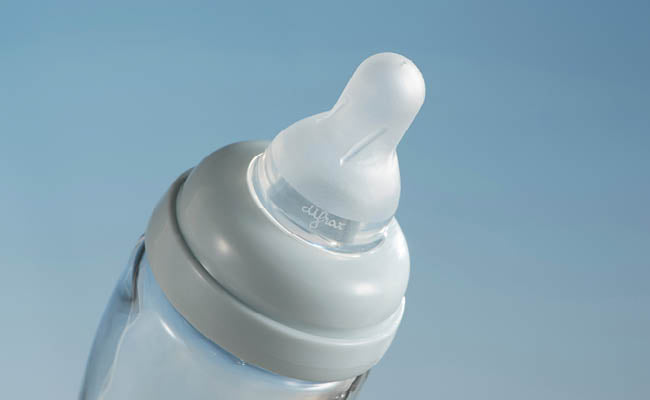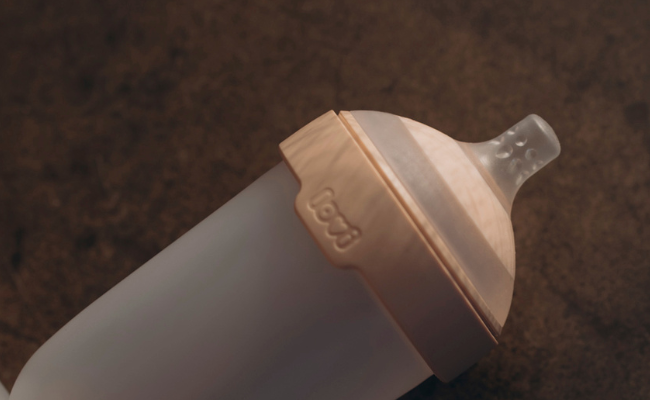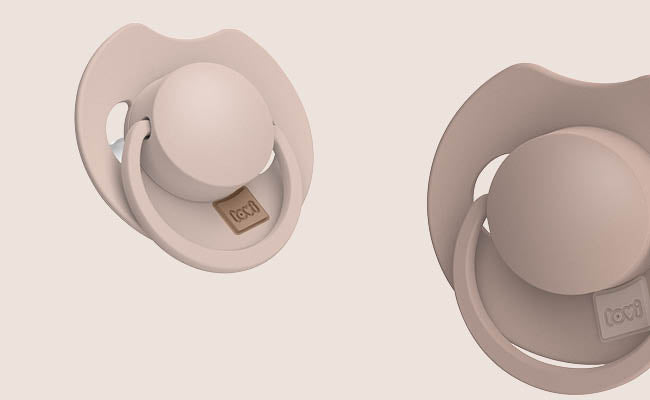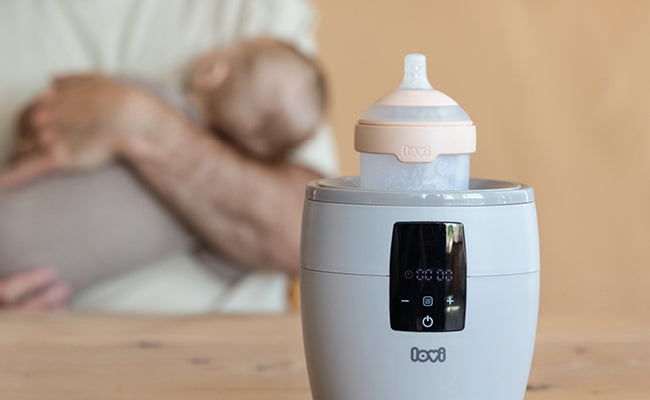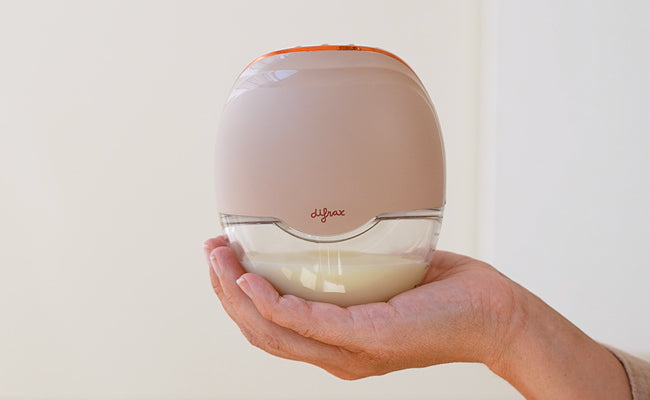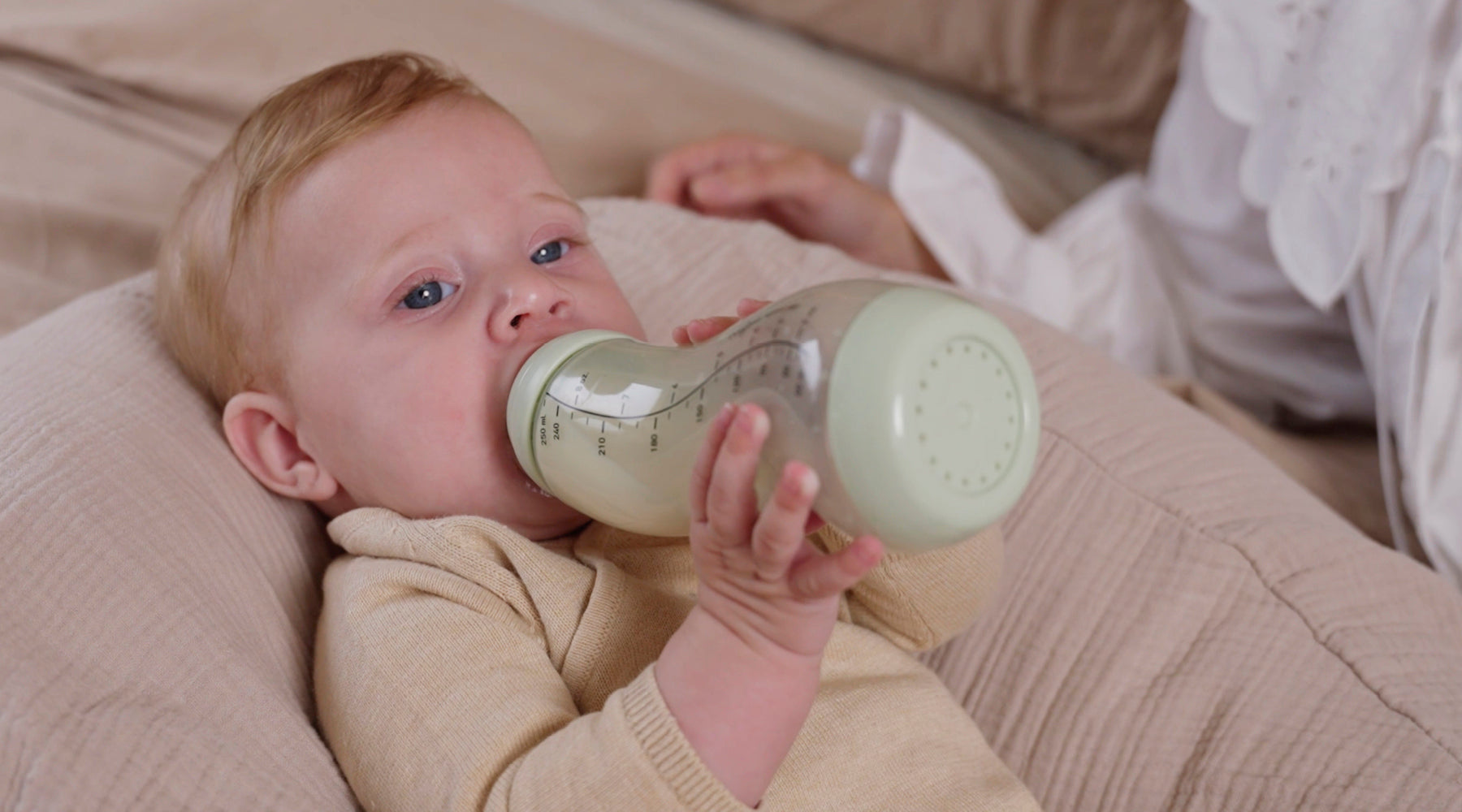
Help! What size bottle teat should I use?
What size bottle teat should I use? This is one of the most frequently asked questions at our customer service desk. And that is not surprising. Finding the right bottle teat size can be quite a job.
This is because the right size is not just determined by the size of the teat hole. To a large extent, your baby's drinking behaviour is the most important factor to take into account. By drinking behaviour, we mean a child's sucking power and ability to dose. Each child has a unique drinking behaviour and this also changes regularly during the first year.
To decide whether you are using the right teat, you look at two things: the drinking behaviour and the duration of feeding. For most children, a feeding time of between 15 and 20 minutes is most ideal.
If your child drinks faster but does not have any complaints such as spitting up excessively, burping, fidgeting or cramps, then this is not a problem. Then there is no problem and no need to change anything. Usually, when the feedings increase, children take longer.
If your child drinks more slowly, but does not fall asleep halfway through and drinks the entire feed, you do not need to make any changes. Please note that feedings between 45 minutes and an hour are really too slow. Your baby will not be able to drink to a high standard and there is a good chance that he will drink too little due to fatigue.
The type of feed also plays a role. Thick foods such as porridge will need a wider teat than thin foods like breast milk or formula.
So the right choice depends on a number of factors:
- Your child's sucking power
- Your child's ability to dose
- The age of your child
- The type of food
Sometimes you have the right teat and the right type of food for your child's age, but it still doesn't work. The feed can go too fast or too slow. How can you solve this?

My child is drinking too fast:
Your child is less than 3 months old, receives thin food from a size S (small) bottle teat and still drinks too fast. This 'start-up' problem is common and can occur with premature and late babies. Especially in the first 6 weeks.
How is this possible? Young babies find it quite difficult to self-administer feed using their tongue in combination with their suction power. The coordination between sucking, dosing, swallowing and breathing is not yet optimal. As a result, even size S (small) can still go too fast. Good news, this problem is usually temporary.

One solution may be:
Dental bottle teat
In this case, you can (temporarily) opt for a dental bottle teat. This teat can help babies with reflux, babies who choke easily, babies who drink too fast or premature babies. The dental bottle teat is flat on two sides, which makes it easier to keep the tongue under the teat. This is necessary for correct dosing. In addition, the drinking hole is not on top of the teat as with the natural teat, but in the upper part towards the palate. When a baby sucks, the food will not shoot directly down the back of his throat, but will hit the palate, making it easier for the food to spread around the mouth. This prevents choking and startle reactions and ensures that your child can dose the food better.
Tip: If your child drinks well with this teat over a longer period, you can try the normal S (small) teat again from time to time. If this works well, you can switch back to the regular small teat. If you still have problems, you can continue feeding with the dental teat and try again later.
You can find the dental teat here.

Thickening the feed
Did you know that you can temporarily thicken pumped breast milk or artificial milk with locust bean gum? The nutrition will then flow less quickly from the teat, even though the baby is sucking hard. It also makes it harder for the baby to give the nutrition back. This is because the food is literally heavier on the stomach than fully liquid food. Locust bean gum is therefore often recommended for babies who spit up excessively (reflux).
Tip: When you are going to add locust bean gum, don't just look at the dosage instructions. Prepare the food so that it flows at the ideal speed for your child. If it is still too fast, make it a little thicker. If it is too slow, make it thinner.
Does the thickened food no longer pass through an S-bottle teat? Then we recommend using an M-bottle teat and, if necessary, to thicken the food a bit. You can vary endlessly with the thickness of a feeding, but not with bottle teat sizes.

1-2-3 XS teat
Difrax has developed a 1-2-3 XS teat especially for babies for whom size Small is still to fast, and for premature babies. What makes this teat so special is that it is a three-speed teat with three different 'slow flow' speeds. This means that there are three different slow flow speeds, called XXS, XS and Small. All geared to the very smallest babies.
You can find the 1-2-3 XS teat here.
Feeding is too slow
Is feeding your baby going too slow? Then choose a larger teat size, even if your child is younger than the age indication on the packaging. The cause of this may be that your baby needs a faster flow or that the food is too thick for the teat size.
Tip: Thickened food such as locust bean gum, flour and cereal porridge thicken further as the food cools. As a result, it is possible that the feed continues well for the first few minutes, but that your child starts drinking restlessly because nothing comes out. This can be easily remedied by diluting the remainder a bit with water or milk (a few ml can make a difference) or by preparing the food in two parts.

The right teat size for my child is not among them
This also happens regularly. One size goes too slow and the other size goes too fast.
In general, these are temporary problems which disappear by themselves as the child grows older and develops a good drinking technique. To bridge this period, it is most practical to 'play' with the thickness of the nutrition. You can adjust it to suit your child. See also the item "Thickening the feed".
Example 1: You are using a small teat and are giving a thin feed. The small is too slow and the medium is too fast. Thicken the milk so that it can pass through the medium. Thin food cannot be made any thinner. Once your child is a few weeks further on, there is a good chance that it will no longer need to be thickened.
Example 2: You are giving flour porridge. This goes too slowly through a medium teat, but too quickly through a large one. Then you have two choices. Either you prepare the milk a little thinner and continue using a medium teat, or you prepare the milk a little thicker so that it passes more smoothly through the large teat.

Look at the individual drinking behaviour
The ages given with the bottle teats are indicative. The most important thing is to look at the child's individual drinking behaviour. For example, a child over 3 months may still be happy drinking from a size small teat and a child under 3 months may be ready for a medium teat. As long as feeding is satisfactory, there is no need to switch to a different size!

Difrax has a range of different bottle teats for different ages and types of feedings. You can find all the information you need about Difrax bottle teats here.




